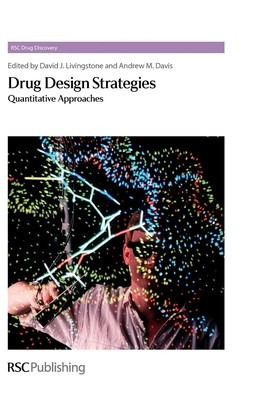
- We will send in 10–14 business days.
- Publisher: Royal Society of Chemistry
- ISBN-10: 1849731667
- ISBN-13: 9781849731669
- Format: 16.2 x 24.1 x 3.9 cm, hardcover
- Language: English
- SAVE -10% with code: EXTRA
Drug Design Strategies (e-book) (used book) | bookbook.eu
Reviews
Description
This book brings together drug design practitioners, all leaders in their field, who are actively advancing the field of quantitative methods to guide drug discovery, from structure-based design to empirical statistical models - from rule-based approaches to toxicology to the fields of bioinformatics and systems biology. The aim of the book is to show how various facets of the drug discovery process can be addressed in a quantitative fashion (ie: numerical analysis to enable robust predictions to be made). Each chapter includes a brief review of the topic showing the historical development of quantitative approaches, a survey/summary of the current state-of-the-art, a selection of well chosen examples with some worked through and an appreciation of what problems remain to be overcome as well as an indication of how the field may develop. After an overview of quantitative approaches to drug design the book describes the development of concepts of "drug-like properties", of quantitative structure-activity relationships and molecular modelling, and in particular, structure-based design approaches to guide lead optimisation. How to manage and describe chemical structures, underpins all quantitative approaches to drug design and these are described in the following chapters. The next chapter covers the value of a quantitative approach, and also the challenge which is to describe the confidence in any prediction, and methods to assess predictive model quality. The later chapters describe the application of quantitative approaches to describing and optimising potency, selectivity, drug metabolism and pharmacokinetic properties and toxicology, and the design of chemical libraries to feed the screening approaches to lead generation that underpin modern drug discovery. Finally the book describes the impact of bioinformatics, current status of predicting ligand affinity direct from the protein structure, and the application of quantitative approaches to predicting environmental risk. The book provides a summary of the current state-of-the-art in quantitative approaches to drug design, and future opportunities, but it also provides inspiration to drug design practitioners to apply careful design, to make best use of the quantitative methods that are available, while continuing to improve them. Drug discovery still relies heavily on random screening and empirical screening cascades to identify leads and drugs and the process has many failures to deliver only a small handful of drugs. With the rapidly escalating costs of drug discovery and development together with spiralling delivery, quantitative approaches hold the promise of shifting the balance of success, to enable drug discovery to maintain its economic viability.
EXTRA 10 % discount with code: EXTRA
The promotion ends in 19d.19:37:34
The discount code is valid when purchasing from 10 €. Discounts do not stack.
- Publisher: Royal Society of Chemistry
- ISBN-10: 1849731667
- ISBN-13: 9781849731669
- Format: 16.2 x 24.1 x 3.9 cm, hardcover
- Language: English English
This book brings together drug design practitioners, all leaders in their field, who are actively advancing the field of quantitative methods to guide drug discovery, from structure-based design to empirical statistical models - from rule-based approaches to toxicology to the fields of bioinformatics and systems biology. The aim of the book is to show how various facets of the drug discovery process can be addressed in a quantitative fashion (ie: numerical analysis to enable robust predictions to be made). Each chapter includes a brief review of the topic showing the historical development of quantitative approaches, a survey/summary of the current state-of-the-art, a selection of well chosen examples with some worked through and an appreciation of what problems remain to be overcome as well as an indication of how the field may develop. After an overview of quantitative approaches to drug design the book describes the development of concepts of "drug-like properties", of quantitative structure-activity relationships and molecular modelling, and in particular, structure-based design approaches to guide lead optimisation. How to manage and describe chemical structures, underpins all quantitative approaches to drug design and these are described in the following chapters. The next chapter covers the value of a quantitative approach, and also the challenge which is to describe the confidence in any prediction, and methods to assess predictive model quality. The later chapters describe the application of quantitative approaches to describing and optimising potency, selectivity, drug metabolism and pharmacokinetic properties and toxicology, and the design of chemical libraries to feed the screening approaches to lead generation that underpin modern drug discovery. Finally the book describes the impact of bioinformatics, current status of predicting ligand affinity direct from the protein structure, and the application of quantitative approaches to predicting environmental risk. The book provides a summary of the current state-of-the-art in quantitative approaches to drug design, and future opportunities, but it also provides inspiration to drug design practitioners to apply careful design, to make best use of the quantitative methods that are available, while continuing to improve them. Drug discovery still relies heavily on random screening and empirical screening cascades to identify leads and drugs and the process has many failures to deliver only a small handful of drugs. With the rapidly escalating costs of drug discovery and development together with spiralling delivery, quantitative approaches hold the promise of shifting the balance of success, to enable drug discovery to maintain its economic viability.


Reviews